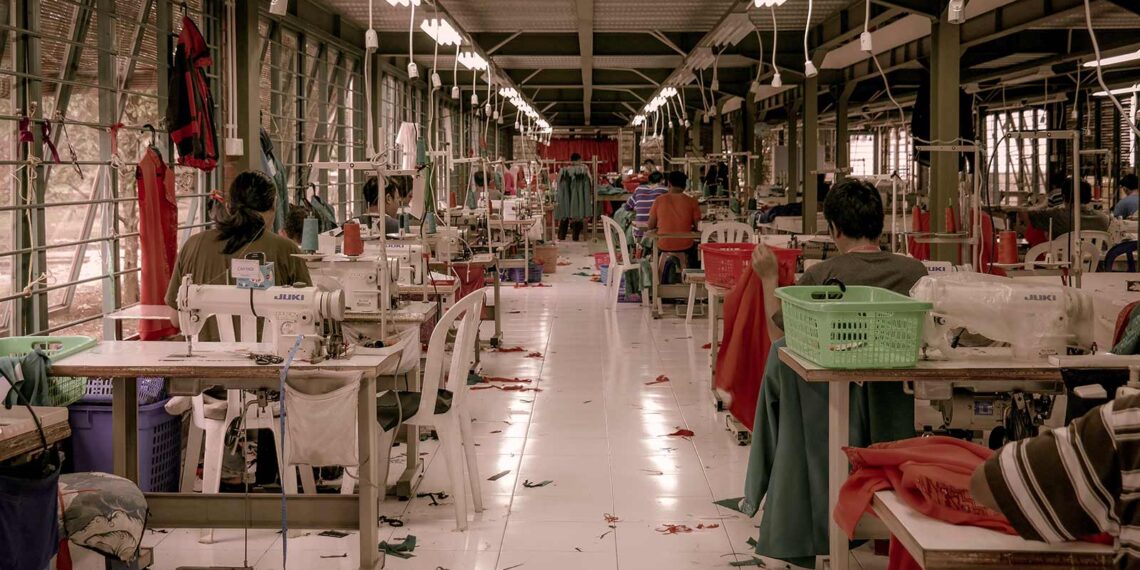Clothes make the man, people make problems. Because people – us – are buying more and more. The shopping baskets are full of cheap items that are disposed of faster than the wallet is pulled out. We show why this is problematic and what you should look out for when buying and disposing of clothes.
More clothes, more waste
Cleaning out the closet – we’re not in the mood for that. Why? Because it takes a long time. Fewer clothes would be the solution and would not only ensure that mucking out takes less time, but would also help the environment. After all, it is suffering as the fashion industry produces more and more clothes, which we cram into our shopping baskets in ever greater quantities – after all, we want to keep up with trends that are changed more often than many a pair of underpants. 150 billion items of clothing are produced every year. That is twice as many as in 2012. However, not only is more being produced and bought, but more is also being disposed of due to poor quality. Currently, 65,000 tons of used clothing are collected in Switzerland every year, compared to around 1.1 million tons in Germany. And while the used clothing container solves the used clothing problem for us, the reality is different.
Out of sight, out of mind
Used clothing containers are not magic boxes. What is disposed of there does not simply vanish into thin air, but has to be collected and sorted – and that costs money. To cover these costs, around two thirds of the items that end up in the used clothing collection are sold abroad. Especially to Eastern Europe and Africa. Attention, now comes the “but”: this does not solve our waste problem, which we outsource to other countries. Even though there is a greater demand for cheap used clothing there than here, such vast quantities of used clothing arrive that they threaten the local textile industry. And because of the poor quality of the goods, sooner or later they end up in landfills, where they pile up into mountains of clothes and are incinerated. But that’s not all: most of these poor-quality clothes are made of synthetic fibers – in other words, plastic. The microplastic fibers enter the environment unfiltered and pollute the basis of life for humans and animals. According to Fashion Revolution Switzerland, an estimated 35 percent of microplastics in the oceans come from textiles. So instead of trying to save the dear turtles with cardboard straws, you should also change your behavior when it comes to clothing.
How to make the difference
We show you how you can make a difference in the way you consume your clothes and what you should look out for the next time you dispose of your clothes.
1. less is more
Used clothing containers are not the problem, we are. That’s why the motto when shopping is: Less is more. It’s better not to buy so many items of clothing and pay more attention to high quality. Yes, you dig deeper into your wallet. However, the garments are generally more durable than the cheap polyester rag.
2. wear for longer
According to Greenpeace, 1.5 million tons of CO2 equivalents could be saved each year if all items of clothing in Switzerland were worn for three years longer. To give us a better idea: This corresponds to the greenhouse gases of a car journey of 7.4 billion kilometers – phu.
3. give a second chance
Laziness is never cool. So if your pants and sweater have a hole, you shouldn’t throw them away straight away. Time to get the dusty sewing machine off the shelf and make up for the shortcoming. And if you don’t have the know-how or time to do this, you can have it repaired by others. Various labels already offer their own repair services, for example. Here we show you how you can have your clothes mended.
4. give away elsewhere
To prevent used clothing collections from becoming overloaded, it can be advisable to give away well-preserved items of clothing to friends or to pass them on to second-hand stores and flea markets. In Switzerland, old clothes can be handed in at the Red Cross stores of the Swiss Red Cross, the Caritas clothing center or Winterhilfe Schweiz instead of in collection containers. In Germany, old clothes can be handed in at the Caritas and German Red Cross clothing stores or at the Berliner Kältehilfe.
5. collection container basics
Even if they are similar in shape, a collection container for textiles is not a waste container. So only clean, well-preserved clothes belong in there. The garments should also be contemporary. After all, nobody wants to walk around like a supporting character in a Jane Fonda workout video. It is important that the clothes are packed in a tear-proof and then well-tied bag before they end up in the container. However, defective and soiled clothing has no place there. It’s worth asking schools and daycare centers if they could use the broken items for handicrafts. Here you can find out more about what should and should not go in the used clothing container. Finally, we recommend that when the synthetic garment reaches the end of its life, so that another person would hardly be able to wear it, you should throw it in the bin at home. This is because it is incinerated correctly and no microplastics end up in the environment. But it would be even better not to buy such fiddly items in the first place.
No more synthetic rags, here is our list of Zurich’s sustainable clothes stores.
Teaser photo: © Unsplash Rio Lecatompessy








